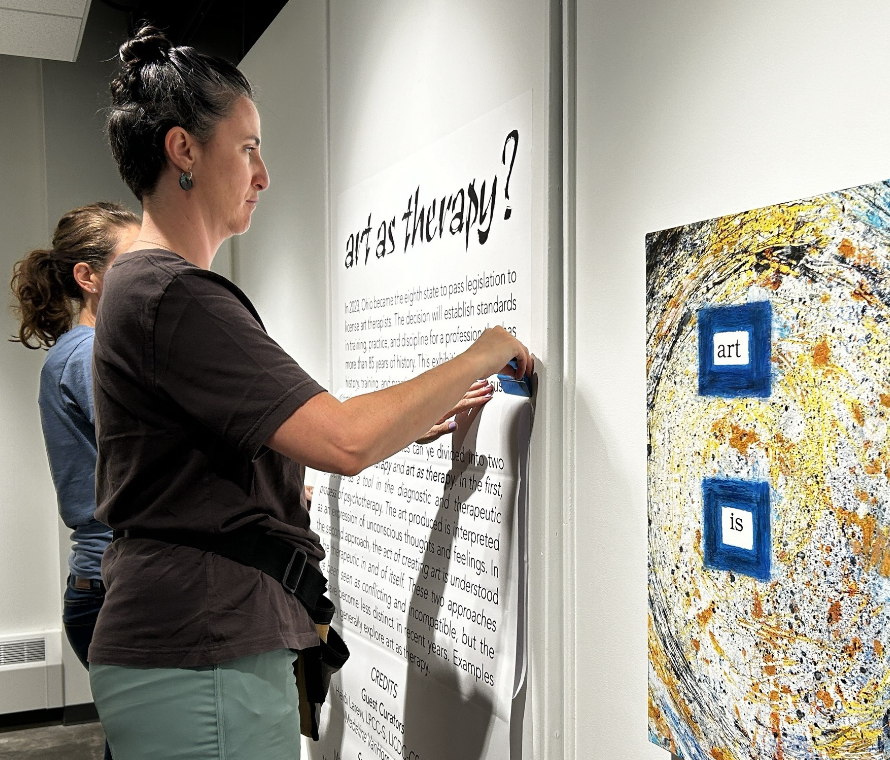Student loans lead to debt crisis
Something to think about when paying for school.
September 2, 2014
The Project on Student Debt reported that 69 percentof college graduates in Ohio have student loan debt, and Consumer Finance Protection Bureau estimates that America has $1 trillion of student loan debt. What is commonly referred to as the student debt crisis, plagues college students all across the country.
Student debt has become such a typical thing here in the United States that many people have just accepted it as a natural part of obtaining a college education. Many young students don’t understand the severity of the issue or just how crippling the debt can be later on in life.
Within only four or five years of their lives, most students accumulate a huge amount of debt that they will struggle to pay off for most of their lives. According to Federal Reserve Board of New York, in the United States, around 37 million people who have taken out student loans have outstanding balances. And The U.S. Department of Education found that over half of the Direct Loans taken out by students are not paid off when they are estimated to be.
These outstanding loan balances aren’t pretty either. According to the Institute for College Access & Success’ Project on Student Debt, the average American college student is $29,400 in debt by the time of graduation. In a breakdown of the amount of debt students had at universities in Ohio, The Project on Student Debt found in 2012 that the average graduate from the University of Akron was $23,392 in debt, and that 73percent of UA graduates were in debt.
Even though student loans are the most popular way to pay for college, it doesn’t mean that it is the only way. There are many different ways to pay for college fully or partly out of pocket, or with help from scholarships or work-study programs. It is possible to graduate without debt, especially $29,400 in debt.
Home sweet home
One of the first steps students can take to ensure that they accumulate as little debt as possible is to commute instead of choosing to live on campus. Living on campus can cost anywhere from $7,020 to $9,866 per year. That amount added with tuition can increase a student’s college costs immensely. Even though driving from home to campus every day can be tedious and unappealing, the money students can save annually is definitely worth it in the long run. It helps that UA is such a commuter friendly school. In fact, according to Off-Campus Student Services, 90 percent of University’s students are commuters. Living at home can cut costs and might even be beneficial to students who choose to do so.
Working 9-5
Though minimum wage jobs aren’t always the most appealing, they definitely are lucrative. Most companies are willing to work with students’ schedules, and some companies even offer tuition reimbursements or scholarships for their employees as well. It also can’t hurt to gain some work experience while in school and hopefully obtain a great reference for the future.
Full-time students can work part-time in order to save up enough money to cover at least half of their tuition, and may even have some extra money to spare. Another option for students is to become part-time students and work full-time in order to pay for their college costs completely. Though it will take longer for students to graduate, a few more years in school definitely beats a lifetime in debt.
Think outside of the box
Work-Study Programs or co-ops are also great options. Federal Work-Study programs are mostly funded by the government and are given to students based off need. Students can apply for the Federal Work-Study program by filling at their FAFSA each year. Once they are eligible for the Work-Study program, they can apply for jobs that the University offers for the program. Students are paid bi-weekly for their work, and it’s their responsibility to pay for their college costs with the money they earn.
Co-ops are often not run by the government but by companies who offer students positions while they attend school. Students can obtain a co-op within the field of their study and sometimes make a lot of money while doing it. As an added bonus, they might even be offered a job with the company after graduation. Unlike students who work a regular job, the money students make with their co-op is not held against them when they are applying for Financial Aid. Students who have co-ops could end up graduating with no debt at all.
Got good grades?
Scholarships are another great way to avoid taking out loans. Most students think that if they didn’t get scholarships for their grades in High School, they won’t be able to obtain any for the rest of their college career. However, there still are a lot of scholarships out there that they can take advantage of. There are scholarships offered by UA for continuing students and scholarships offered by many of the departments. There are also many websites online like FastWeb!, CollegeNET and CollegeScholarships.org that can help students find and apply for scholarships that are available to them. Though students might not get enough scholarship money to pay for their tuition completely, every little bit helps.
Students should educate themselves on the student debt crisis and on the many different ways they can pay for college. By educating themselves, students can choose the right option for themselves and have the knowledge they need to fully understand what student debt really is.











